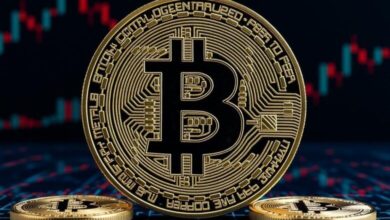Gold at $4,000, Bitcoin at $125,000: The New “Debasement Trade” and the Clash of Safe Havens

For centuries, investors fleeing uncertainty have turned to gold. Today, as global debt soars and currencies lose purchasing power, the “barbarous relic” is back in the spotlight—trading above $4,000 an ounce for the first time. Central banks are buying at record pace, mining stocks are outperforming, and analysts like Goldman Sachs believe gold could climb toward $5,000 by 2026.
Yet not everyone is convinced that this glittering rally is the ultimate answer to today’s monetary turmoil. Among the skeptics is real estate mogul Grant Cardone, who issued a blunt warning to Bitcoin investors tempted to cash out and chase gold’s gains: “Don’t be stupid. That’s a million-dollar mistake,” according to Decrypt.
The Allure of Gold
Gold’s rise is as dramatic as it is historic. The metal has climbed for seven straight weeks, powered by a cocktail of debt concerns, dollar weakness, and geopolitical jitters. Central banks, particularly in emerging markets, are diversifying reserves away from the dollar. Gold ETFs are seeing fresh inflows, and retail demand has surged as savers look for safety.
This momentum has put the mining industry back in the spotlight. After years of underperformance, mining stocks are suddenly outshining darlings of the AI and Bitcoin boom. For some, gold’s performance isn’t just a hedge—it’s a signal that faith in fiat is cracking.
Billionaire Ken Griffin sees a darker side, warning that the gold rally reflects weakening confidence in U.S. fiscal stability. If true, the metal’s surge isn’t just a trade; it’s a referendum on America’s economic credibility.
Bitcoin’s Counterclaim
Bitcoin, meanwhile, is no stranger to the “debasement trade.” With a fixed supply of 21 million, it offers something gold cannot: mathematical scarcity immune to technological advances or new discoveries. While gold miners can expand production—perhaps even more so in the age of AI-driven robotics—Bitcoin’s issuance schedule is etched into its code.
Cardone seizes on this point. For him, trading Bitcoin for gold is short-term thinking. Vaults, transport costs, and mining supply pressures make gold clumsy compared to Bitcoin’s digital portability. “Gold’s scarcity can be undermined by new technology. Bitcoin’s scarcity is absolute,” he argues.
This conviction has echoed across crypto circles, especially as Bitcoin’s price has surged past $120,000 in 2025. Yet, in a twist, the recent rally in gold has coincided with a dip in Bitcoin, as a stronger U.S. dollar index weighs on the crypto market. For now, the two supposed safe havens are diverging.
The “Debasement Trade” Unites Them
Despite the rivalry, both gold and Bitcoin are fueled by the same underlying force: the erosion of trust in fiat money. Analysts increasingly describe the current moment as the rise of the “debasement trade.” The logic is simple: if governments are printing trillions and debts are ballooning, investors will flock to assets that can’t be printed.
In this framing, the question isn’t gold or Bitcoin—it’s how much of each. Hedge fund legend Ray Dalio has long advocated for a balanced approach, arguing that both assets play complementary roles in a portfolio designed to withstand monetary storms.
Where the Tide May Turn
Still, cracks are visible. Bank of America warns that gold’s record-breaking run may be stretched, with technical signals flashing “overbought.” A pullback could test investor conviction. Bitcoin, for its part, remains vulnerable to short-term volatility and regulatory shocks—even as ETF adoption and institutional flows strengthen its long-term case.
The truth may lie somewhere between Cardone’s absolutism and the market’s current euphoria. Chasing gold at record highs could indeed prove costly. But dismissing it outright underestimates the enduring psychological and institutional weight the metal carries. Bitcoin may be digital gold, but gold is still… gold.
A Safe Haven in Two Acts
Today’s financial theater offers two protagonists for the same role. Gold, ancient and tangible, now gleams brighter than ever. Bitcoin, young and digital, promises permanence in code. Both are rising not just against the dollar, but against the very idea that money should be infinite.
The real debate isn’t about which asset is “better.” It’s about which narrative—tradition or technology—will define the next chapter of monetary history.





